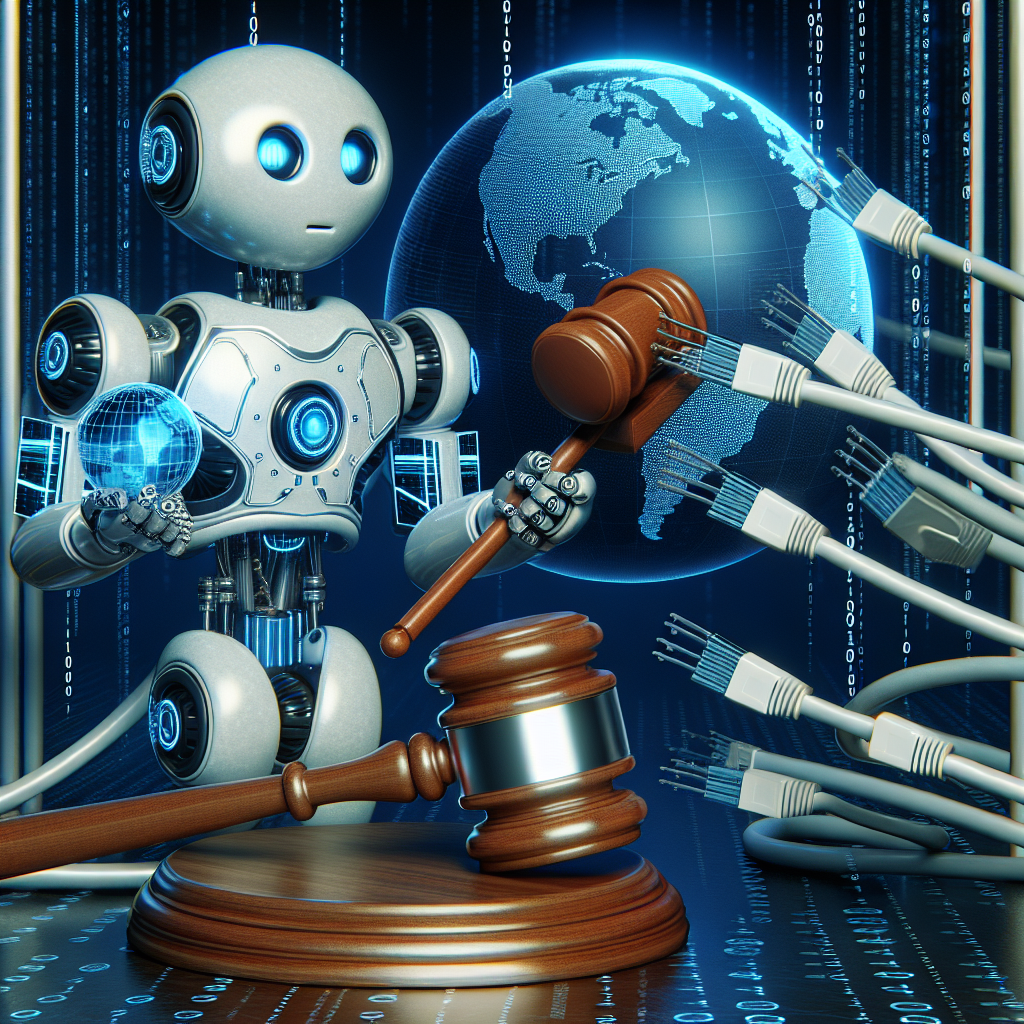The Impact of AI on Telecommunications Regulation
Artificial Intelligence (AI) has revolutionized many industries, and the telecommunications sector is no exception. The integration of AI technologies in telecommunications has brought about significant changes in the way services are delivered, monitored, and regulated. This article will explore the impact of AI on telecommunications regulation and how it is shaping the future of the industry.
AI in Telecommunications
AI technologies have been widely adopted in the telecommunications sector to enhance efficiency, improve customer service, and optimize network performance. Some of the key applications of AI in telecommunications include:
1. Network optimization: AI algorithms can analyze network data in real-time to identify and resolve issues before they affect service quality. This helps telecommunications providers to improve network performance and reduce downtime.
2. Predictive maintenance: AI can predict equipment failures and recommend maintenance actions to prevent service disruptions. This proactive approach to maintenance helps reduce costs and improve service reliability.
3. Customer service: AI-powered chatbots and virtual assistants are being used by telecommunications providers to handle customer inquiries, provide support, and offer personalized recommendations. This improves customer satisfaction and reduces the workload on human agents.
4. Fraud detection: AI algorithms can analyze patterns of fraudulent behavior to identify and prevent fraudulent activities such as unauthorized access, account takeovers, and phishing attacks. This helps protect both customers and telecommunications providers from financial losses.
5. Regulatory compliance: AI can help telecommunications providers comply with regulatory requirements by monitoring and analyzing data to ensure adherence to laws and guidelines. This helps avoid fines and penalties for non-compliance.
Impact on Telecommunications Regulation
The integration of AI in the telecommunications sector has had a profound impact on regulatory frameworks and practices. Some of the key ways in which AI is influencing telecommunications regulation include:
1. Enhanced monitoring and enforcement: AI technologies enable regulators to monitor telecommunications providers more effectively by analyzing large volumes of data in real-time. This helps detect violations of regulations, such as data privacy breaches, network congestion, and service quality issues.
2. Improved decision-making: AI algorithms can analyze complex datasets to provide regulators with insights and recommendations for making informed decisions. This helps streamline the regulatory process and ensure that decisions are based on accurate and up-to-date information.
3. Regulatory sandboxes: Some regulators are using AI to create regulatory sandboxes, which are controlled environments where new technologies and services can be tested without the risk of non-compliance. This allows regulators to assess the impact of AI on telecommunications services before implementing new regulations.
4. Data privacy and security: AI technologies can help regulators monitor and enforce data privacy and security regulations by analyzing network traffic, detecting suspicious activities, and identifying vulnerabilities. This helps protect consumers’ personal information and prevent cybersecurity incidents.
5. Transparency and accountability: AI can improve transparency and accountability in the telecommunications sector by providing regulators with visibility into the operations of telecommunications providers. This helps ensure that regulations are being followed and that consumers are being treated fairly.
Frequently Asked Questions (FAQs)
1. How is AI being used in telecommunications regulation?
AI is being used in telecommunications regulation to enhance monitoring and enforcement, improve decision-making, create regulatory sandboxes, ensure data privacy and security, and promote transparency and accountability.
2. What are some challenges of regulating AI in telecommunications?
Some challenges of regulating AI in telecommunications include ensuring that AI systems are fair and unbiased, protecting consumers’ privacy, addressing cybersecurity risks, and keeping pace with rapid technological advancements.
3. How can regulators ensure that AI is used ethically in telecommunications?
Regulators can ensure that AI is used ethically in telecommunications by establishing clear guidelines and standards for AI implementation, conducting regular audits and inspections, promoting transparency and accountability, and engaging with stakeholders to address ethical concerns.
4. What are some potential benefits of AI in telecommunications regulation?
Some potential benefits of AI in telecommunications regulation include improved efficiency and effectiveness of regulatory processes, enhanced monitoring and enforcement capabilities, better decision-making, increased transparency and accountability, and enhanced consumer protection.
5. How can telecommunications providers prepare for the impact of AI on regulation?
Telecommunications providers can prepare for the impact of AI on regulation by investing in AI technologies, ensuring compliance with regulatory requirements, developing AI governance frameworks, training employees on AI ethics and compliance, and engaging with regulators to address regulatory concerns.
In conclusion, AI is transforming the telecommunications industry and reshaping the way services are delivered, monitored, and regulated. By leveraging AI technologies, regulators can enhance monitoring and enforcement, improve decision-making, ensure data privacy and security, and promote transparency and accountability in the telecommunications sector. As AI continues to evolve, regulators and telecommunications providers must work together to address the challenges and opportunities presented by AI in telecommunications regulation.

